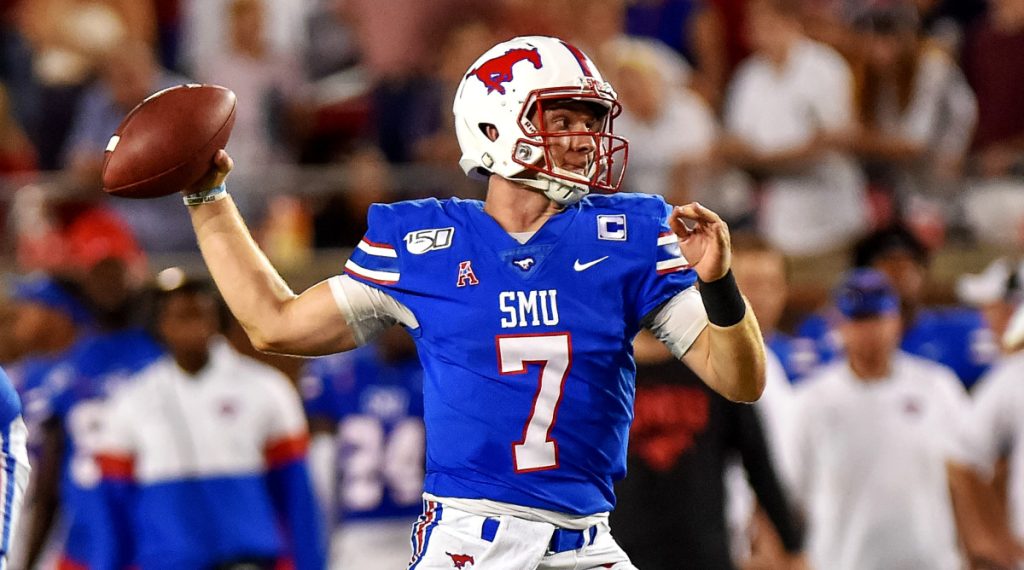Three clubs, including SMU, will join the ACC in 2024. Another institution is making the move from the Group of Five conferences to the Power Five. This article examines SMU’s predicament and its implications for the realignment of collegiate football.
The presidents of SMU Stanford, and Cal have decided to join the ACC in 2024. It is said that the three institutions will not get their full income shares from the ACC for nine years. According to CBS, SMU will probably have to pay the AAC an exit fee of more than $10 million because it plans to depart in 27 months or less.
Since AAC is now acquiring Army, commissioner Mike Aresco had backup plans in case SMU left. Some have started to speculate that the ACC would collapse in the same way that the Pac-12 did.
In recent months, the ACC has been sued by both Clemson and Florida State on issues pertaining to the league’s grant of rights.
According to reports, Florida State has been upset with the ACC’s media arrangement for months, claiming that FSU isn’t earning enough to compete with SEC and Big Ten teams that are also vying for national titles.
For instance, a six-year College Football Playoff agreement until 2031 that gives the Big Ten and SEC almost twice as much money as the ACC and Big 12 was recently approved by the nine FBS leagues.
According to The Athletic, Florida State has claimed the ACC mishandled its TV deal with ESPN. Additionally, FSU is asking a Florida court to decide if the powers granted by the ACC are valid.
SMU College Football

Regarding a school quitting the league, Clemson is contesting the validity of the ACC’s grant of rights. The arguments made by Clemson and Florida State against the ACC, according to sports media analysts, aren’t particularly compelling, which may keep the conference from folding anytime soon. That does not negate the possibility, though.
These universities could be able to find a way to leave the ACC financially, or they can reach a mutually agreeable resolution that allows those two programmes to look for another conference.
But in terms of college football, the ACC would be losing maybe its two most valued members if that were to occur. Additionally, as was the case with the Pac-12, the departure of a few well-known universities might inspire numerous others to follow suit.
According to reports, a court made the decision to issue a temporary restraining order against the board of trustees in North Carolina this week. This implies that the board cannot discuss anything in private, such as money or realigning conferences.
For the benefit of the Group of Five, it is conceivable that some programmes would be abandoned by the power leagues in the event that the ACC were to entirely disband. Maybe the Sun Belt or the AAC work out a deal with the remaining ACC schools. News for College Football
SMU declared that in only seven days, it had raised $100 million to assist with their move to the ACC. Due to the money the athletic department is losing out on as it moves to its new league, that money will be crucial. The programme also revealed that, in only three days, media coverage of the ACC decision generated nearly $163 million in advertising revenue.
SMU President R. Gerald Turner stated in a news release, “This is an unprecedented financial commitment from a core group of donors who have understood from the beginning that moving to the ACC will be transformational for our university on both athletic and academic levels.” “Despite the fact that much work remains, the fact that SMU and Dallas were able to organise this level of support in just one short week shows that they appreciate this opportunity and are willing to support it.”
SMU’s record versus ACC clubs as of right now is 16–18. The teams in the ACC this year are Wake Forest, Boston College, Clemson, Duke, Florida State, Georgia Tech, Louisville, Miami, N.C. State, North Carolina, Pitt, Syracuse, Virginia, and Virginia Tech.
Reportedly, a few of those colleges have expressed a lack of interest in accepting new students. For instance, Florida State has voiced dissatisfaction with the ACC’s media agreement and hinted at a potential move to a another league.
Although SMU has just been in the AAC since 2013, they have long been considered as a potential Power Five contender.
Former Conference USA member SMU positioned itself as the next G5 institution to advance, following Cincinnati, Houston, and UCF to the Big 12.
After defeating Boston College in the Fenway Bowl and winning the AAC Championship against Tulane, SMU finished the 2023 campaign with an overall record of 11-3.
According to Yahoo Sports, each programme received around $40 million from the ACC’s media arrangement in 2021–2022. The agreement is scheduled to end in 2036.
By contrast, each school receives over $50 million from the Big Ten and SEC media deals. According to USA Today, the AAC and ESPN reached an agreement on a $1 billion 12-year pact. The agreement, which went into effect in 2019, called for each programme to receive little less than $7 million annually.
This month, the Power Five conferences and the NCAA decided to allow colleges to pay athletes directly. SMU is definitely impacted by this.
Following the NCAA’s resolution in federal antitrust charges, former collegiate players will now get compensation since they were unable to make money off of their names, likenesses, or photographs while they were in school. According to ESPN, this will cause the collegiate athletics regulatory body to compensate former and present players almost $2.7 billion over a ten-year period.
Nearly half of it will be covered by the NCAA. Sixty percent of the remaining half will come from conferences and programmes that are not Power Five.






